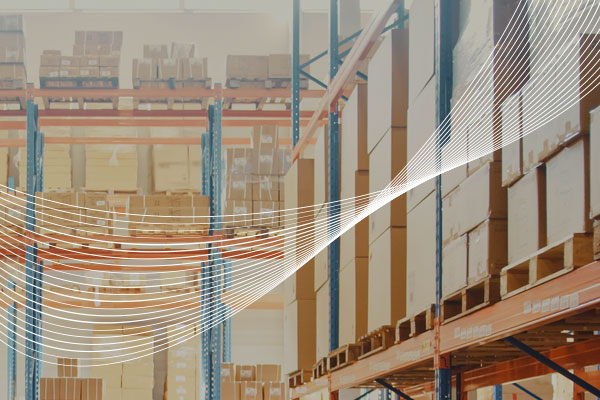How B2B Distributors Can Attack 2021
By Zilliant
Jan 05, 2021
Table of Contents
2020 hasfinallycome to a close.An arbitrary turn of the calendar doesn’t automatically wipe away the painsor solve all the problemsof the past 12 months – a pandemic still rages, businesses of all types and sizes still scramble to calibrate to a new normal.However, anew calendar year does give us an opportunity to reflect, reset our expectations and (with all requisite humility) projectanoutlook forthe near future. It also meansthat we can take all the hard lessons from 2020 and applythemtoday,as we sit herea long year older and wiser.
What follows is acuratedsampling of predictions and outlooks for companies in the B2B distribution space in 2021, accompanied by our take on each.
Industrial Distribution:
“Today, a customer-centric experience is no longer nice-to-have, it’s an expectation in B2C. But when it comes to B2B, most businesses are still light years behind their B2C counterparts. We live in an experience-focused economy, which means as B2B leaders, we can’t force buyers to change their behavior to meet our solution. It just won’t happen. Instead, as we head into the year ahead, we must conform our solutions to give customers what they want when they need it in order to succeed. As expectations evolve, our solutions must be lean andagileso we continue to meet customers where they are and provide the best customer experience.”
Zilliant’stake:We predict that 50% of in-person sales cycles are gone forever. Yet we agree that customer-centric buying experiences are an absolute must. How does one square this apparent contradiction? Is there a way to provide customer-centricity in B2B without the handshakes and customer dinners of pre-COVID times? It’s certainly a tall order in the highly tailored and often customer-specific nature of B2B sales. Thankfully, AI technologies have advanced rapidly to give customers a personalized experience that is contextually relevant to their unique relationships with suppliers. Intelligent selling tools have also emerged to arm remote salespeople with timely and targeted campaign actions, faster quoting, winning price points and talk tracks so they can reliably articulate value to customers. As a result, a large percentage of business will be transacted digitally in 2021 and beyond, with increased efficiencies on both sides.
MarketingProfs:
“Marketers need to work harder than ever to attract the attention of customers and gain their trust, and to reframe The Why underlying the buy so that it's relevant. Old segmentations, strategies, and selling points may fail because customers now have different mindsets and motivations; however, humans are still hardwired to rely on decision defaults. And that means it's even more important to understand human behavior and the decision-making shortcuts people use, so that marketers can increase their likelihood of success.”
Zilliant’stake:We predict that the leaders in B2B distribution will get there by closing the strategy-execution gap.For B2Bdistributorsto compete and winin 2021, executivesfrom marketing to sales to financemust have a means to tie their strategies to how sales teams engage with customers through each interaction.If the company strategy is to increase profitability and revenue, how should that impact prices and sales decisions across various customer types, multiple channels, agreements, regions, products, and much more? How should those actions change to meet P&L goals as costs change, demand spikes or plummets, volume growth stagnates, or new competitors sneak in?And,importantly, how are these strategies tied to a company’sowndata on observed customer behavior and buying patterns?
Closingthe gap between corporate strategies and sales actions is an oft-cited catchphrase, yet companies have yet to achieve a means to translate strategy into action. Why? Because despite significant investments in mobile, eCommerce and sales intelligence technology,companies still lack a centralized, connected solution.
However, software, data science and AI have made significant, pragmatic advances to address challenges in the complex and dynamic B2B business landscape. The resultis that it is nowpossible to translate growth and profit strategies into sales action.
Gartner:
“Technology advancement will, of course, have a large effect in the coming decade. AI, blockchain, quantum computing and the mass arrival of machine customers will change how organizations and societies operate. There will be more frequent market disruptions and the emergence of what comes after digital: Autonomous business. This will change the landscape of the decade…By 2024, 15% of B2B organizations will use digital commerce platforms
to support both its customers and sales reps in all sales activities.As the world emerges from the COVID-19 pandemic and spending slowly but inevitably recovers, thebehavioral patterns and new experiences learned during lockdowns will not be forgotten. It is anticipatedthat even when we don’t need masks anymore, many individuals will continue to take advantage ofconvenient self-service, digital ways to shop and pay, both in-store and online. This makesinvestmentsinto digital commerce a future-proof strategy.”*
*According toGartner Predicts 2021: COVID-19 Drives Accelerated Shift to Digital and Commerce Model Evolution
Zilliant’stake:This quantum leap in B2B technology will extend into the pricing realm. In fact, we predict that 2021 will be the year that price optimization and management technologycrossthe adoption chasm from “visionary” to “pragmatic” companies. Every point of margin counts just that much more given our current economic climate. Despite the troublesome year that was 2020, we saw a tremendous uptick in interest as these solutions creep up into the mainstream. Most everyone is aware ofHarvard Business Review’snearly 30-year-old insight that a one percent improvement in price, assuming no loss of volume, increases operating profit by 11.1 percent. Until recently it just wasn’t clear what to do with that information on an enterprise scale. Pricing solutions have made vast advances in recent years, empowering pricing teams to simplify arduous price management and administration tasks while delivering market-aligned dynamic pricing to maximize margin or revenue. As the momentum swells and the economic realities continue to increase the pressure on bottom lines, we see widespread adoption of these solutions in the forecast.
Adobe:
“B2B commerce increasingly will look more like B2C commerce as businesspeople continue to look for the same kind of online experience in the workplace that they have as consumers.That’s especially true as the millennial generation, who has been steeped in internet technology since childhood, becomes the biggest part of the global workforce…To emulate the B2C experience for enterprises, businesses need to give their customers more tools to research products and services, and make them easier to discover. Those tools can include recommendations on other products to buy – a cross-selling strategy that helps to increase the average ticket size…Whenever possible, businesses should seek ways to give buyers as many self-serve tools as possible.”
Zilliant’stake:We believe, in 2021,that theB2B eCommerce experience will mirror that of B2C.By which we meancompanies will be able to deliver the real-time pricing, product and sales experience their customers expect, with all the nuance of the dynamicB2B market taken into consideration.
How do we get there? Fair question, from a rightly skeptical B2B executive audience.To thosefollowing B2B and the complete havoc that Amazon and other born-in-the-cloud competitorshavewreaked on the market, pointing out the urgency of eCommerce is like telling a stock trader to "buy low and sell high."
What makes B2B eCommerce such a challenge is the process ofreconciling consumer strategies like real-time product and pricing promotions to the B2B market, which is highly customized, negotiated and tailored by its very nature.
The good news is that, despite these challenges, B2B software has caught up with commercial capabilities and can mimic the B2C experience. Advances in pragmatic AIcan nowdeliverfor B2B companiesthe frictionless, intuitive customer experience onlinethat theirB2C counterpartshave deployed for years.As the use cases and ease of implementation grow, the standard B2B eCommerce experience will also reach a maturation.
Happy New Year! Stay tuned to theZilliantblogthroughout 2021 to stay ahead of the game. You can alsocontact usany time.



